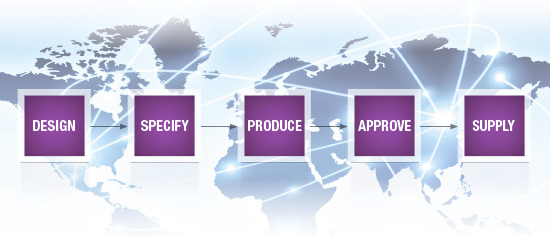Coordinating Product Color across Job Functions
Designers
Depending on the application, the color process often begins with the designer. Their objective is to not only design products that are useful or entertaining, but that are also visually appealing to the customer or end-user. Designers specify the color and appearance of the product, among other things.
General role in the color process:
- Determine if the desired color is feasible to produce in the given system or substrate
- Specify color values or target values for the finished product
- Communicate color specifications to the customer, suppliers, and internal departments
- Manage color palettes for brands and products
Prior to communicating the selected color to R&D or other departments, the designer can use advanced software to determine if the color is feasible to produce. To accurately communicate the specified color to these departments in numerical terms, the color is quantified using high accuracy color measurement instrumentation. This avoids misinterpretation of specifications by others and helps to move the color process along quicker.
To accurately specify and communicate product colors across the supply chain, check out the SpectraMagic™ NX2 Color Data Software and these high accuracy color measurement instruments.
Research and Development / Scientists
Research and development (R&D) professionals are key to creating the color(s) specified by the designer, customer, or internal team. Their goal is to formulate recipes and samples that achieve the specified color the first time.
General role in the color process:
- Formulate color recipe(s) that best match the standard color
- Define conditions and methods for producing color that meets the standard accurately and consistently
- Create samples and analyze for metamerism* or inconsistent color
- Send samples to designer and/or customer for approval
To achieve accurate and consistent results in this role, standardized processes, environmental conditions, and equipment maintenance procedures must first be established. With high accuracy color measurement instrumentation and sophisticated color matching or analysis software, R&D professionals are able to quickly formulate or correct colors and clearly communicate results to others. This increases productivity and eliminates waste.
To increase productivity and eliminate waste within R&D, check out a color formulation software and these high accuracy color measurement instruments.
Production Professionals
Production professionals manufacture the finished product. Their objective is to produce products that meet defined quality standards, including color.
General role in the color process:
- Define how and when product color is to be evaluated
- Define process control procedure for correcting out-of-spec color
- Produce samples/color batches according to R&D’s recipe and procedure
- Manufacture finished product with defined color(s)
Tracking key performance metrics, including manufacturing yield and overall equipment effectiveness (OEE), is essential to improving the production process and meeting standards more efficiently. Many production managers are now focused on automating the production process and gaining access to real-time data in order to increase uptime and decrease errors. Automated measurements providing real-time data on the production line enable workers to identify and correct out-of-spec product color immediately, eliminating rejects and waste.
Quality Assurance / Quality Control
Professionals within the quality control field ensure that everything from raw materials to finished products meet defined quality standards through stringent inspections. This includes the color and appearance of products typically specified by the designer, customer, or internal team.
General role in the color process:
- Evaluate samples/color batches and finished product color against the standard
- Pass or fail color based on color difference formula and tolerance limits
Accurate data is essential for quality control to perform effectively. Accurate color measurement instrumentation is required to generate color values of the samples being inspected for comparison against the standard color values. For improving efficiency and performing smarter, more informed assessments, color quality control software is also used to store measurement results, retrieve specifications, and identify out-of-spec color and metamerism* more easily. This ensures the finished product meets color specifications.
To accurately measure and inspect the color and appearance of samples, check out the SpectraMagic™ NX2 Color Data Software and these high-accuracy color measurement instruments.
To coordinate color seamlessly from design to finished product, standardized equipment, procedures, and conditions must be documented and shared across the supply chain. This ensures the same guidelines and specifications are adhered to for color consistency, accuracy, and improved efficiency.
Processes and conditions to be standardized include:
Visual Evaluation Specifications: Light sources, viewing angles, sample presentation conditions
Measurement Instrument Specifications: Color space, color difference formula, color tolerances, instrument geometry, CIE standard observer, illuminants, sample presentation conditions
* Metamerism: When two or more samples match in color under one light source or viewing condition but not under another
Like this article? Click here to sign up for our monthly Color Trends & Technology newsletter to stay updated on the element of color, best practices for controlling and evaluating the color of objects, educational seminars, and advanced technology for research and manufacturing environments.
The technological leader in color and light measurement solutions, Konica Minolta Sensing Americas helps organizations formulate, evaluate, and control color to meet product quality and operational goals more efficiently.











